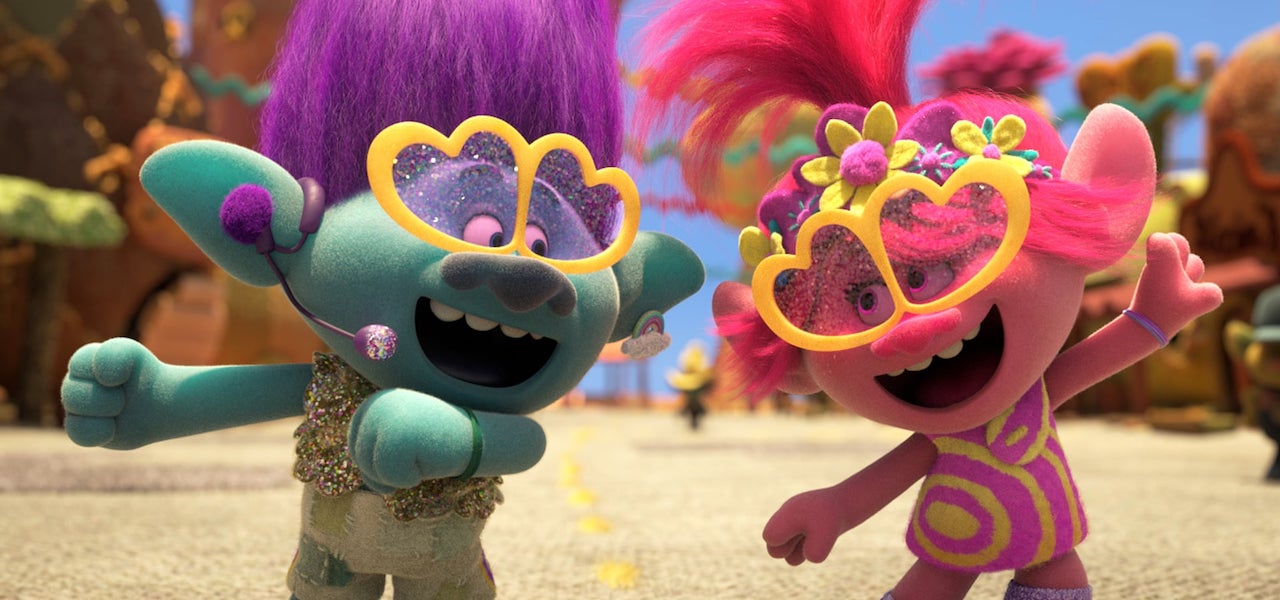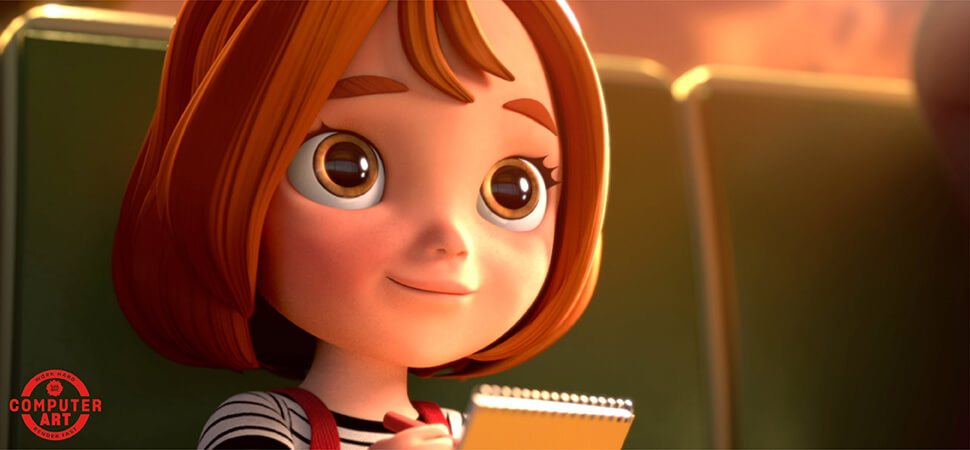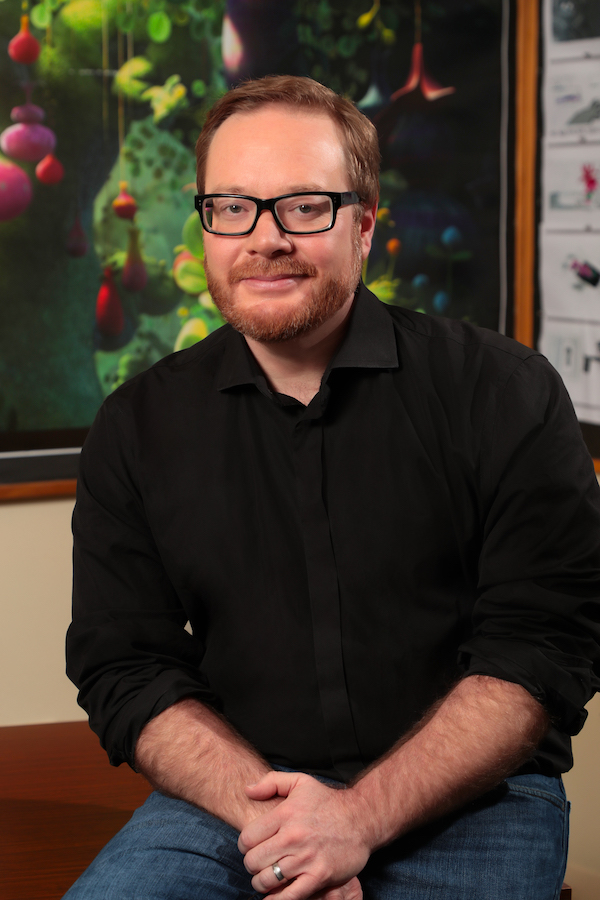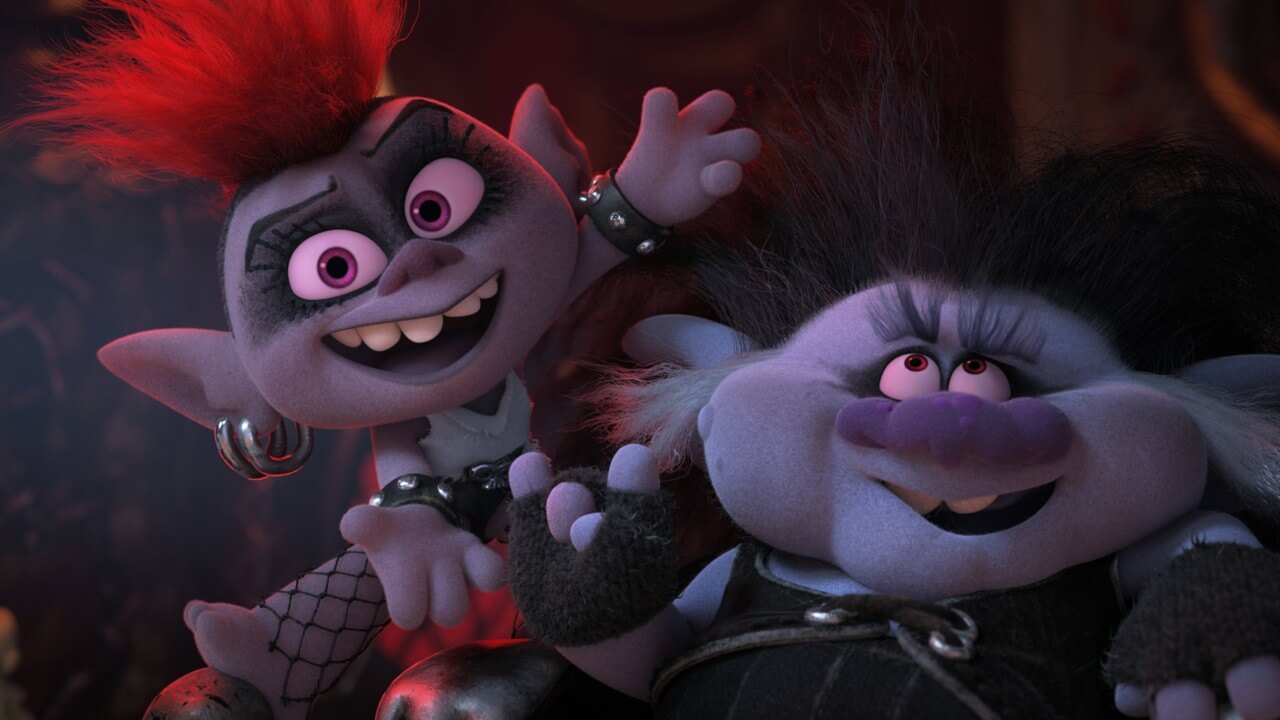‘Trolls World Tour’ Director Walt Dohrn On How To Make Audiences Laugh

Trolls World Tour hits screens today, but not as originally planned. Rather than delay the film, Universal Pictures has opted to release it directly to streaming in territories where cinemas remain shuttered (i.e. practically everywhere). This day-and-date theatrical and digital release is a first for a Hollywood film.
The arrival of Dreamworks Animation’s sequel in the midst of this crisis is ironic (or maybe very appropriate), as this is a film that celebrates community like few others. The premise is simple: the pop-loving tribe familiar from 2016’s Trolls learn that they are only one nation of trolls among six, each of which is organized around a different genre of music.
Cue an eye-popping journey through the various troll kingdoms — funk, classical, techno, country, rock — and a dizzying roll call of cameos by music legends: Kelly Clarkson, Anderson Paak, and Ozzy Osbourne, to name only three. The film gently subverts the stars’ real-life personas and each genre’s public image, generating laughs along the way.

In general, Trolls World Tour is shot through with a zany, absurdist humor that it shares with its predecessor. Here we sense the influence of Walt Dohrn, its director (and the co-director of the original film). Dohrn is a director, writer, and story artist with a strong track record in comedy — his résumé includes the Shrek series, Dexter’s Laboratory, and Spongebob Squarepants.
Speaking to Cartoon Brew, he starts by joking that his latest movie is “scientifically engineered” to make viewers feel good. Below, he tells me more about what it takes to make an audience laugh.
In Trolls World Tour, you’re mining each music genre for humor. You’re paying homage, but also riffing on the stereotypes about that genre. How did you strike that balance?

Dohrn: It’s a careful balance, because we don’t want to mock, but at the same time we want to mine it for humor. My first storyboarding job was on Spongebob — I learned on that show, “When can we do a joke?” I co-directed this movie with Dave Smith; he and I went to Calarts, and we were raised in this system together, always looking for the humor. But again: trying to strike that careful balance where we also wanted to be authentic to the genre and not caricature it.
Were some genres harder to make funny than others?
Dohrn:Absolutely. Designing the funk world was the most complex, in many ways, from a social responsibility point of view — [trying not] to appropriate imagery or caricature it. It was the last world to be designed because we went through many iterations, with a lot of consultations with sociologists from UCLA.
And also with [funk legend] George Clinton himself, who was a visual consultant on the film, as well as being a voice and helping with the music. We were so inspired by the album cover artwork from the 1970s: [Clinton’s bands] Parliament and Funkadelic. But we wanted to make sure we weren’t appropriating that imagery.
Some of the character designs are riffing on the public image of the music star voicing them — the Ozzy Osbourne troll made me laugh the most. At what point were the voices cast, and to what extent did they shape the visual development?
All departments are very organic processes. When we were designing, for example, King Thrash, who’s played by Ozzy Osbourne, we were working with the character designer Tim Lamb. We were inspired by Ozzy and many rockers, but we were very careful: we hadn’t cast him yet — it was a dream come true [when we did] — but we wanted to make sure that it wasn’t part of our visual signature to caricature people.
But again, we’re very inspired by real-life people. Queen Barb took a lot of inspiration from Wendy O. Williams, a punk rocker from the 1970s. The character becomes an amalgamation of all the influences.
Was it clear from the outset which genres you’d incorporate into the narrative?
Dohrn:It was hard to distill it down to these six main genres. It’s an 82-mintue movie — there’s only so much representation we could have in the film! We worked with a musicologist, who said that these six genres are represented around the world in some form.
But in the end, we said, “Let’s get as much diversity and representation as we can.” So we started [including more genres on top of the six main ones]: reggaeton, K-pop, yodeling. We tried other stuff: mariachis and barbershop quartets, which apparently didn’t need representation in the world, even though it was a very funny sequence!
I have Swiss family, so I was glad to see yodeling in there.
Oh good! I hope you weren’t offended. I went to Germany to do some press, and they were like, “Yeah, real nice. This is how you represent the Germans!” We had a German actor in there, and he put in a lot of improvisation, but maybe we didn’t represent Switzerland and Germany as fairly as we could. But it was a good gag.

“Trolls World Tour” rock
Queen Barb (Rachel Bloom) and King Thrash (Ozzy Osbourne).
More broadly speaking: at what point during development or production do you know that a joke will work? Is it common to storyboard a joke that turns out to be a dud when you animate it?
Dohrn:We preview the films a lot internally: we put a rough cut together, and show it to the crew and other people in the studio, to see how jokes are playing. Usually, by the time we’re animating, we’re fairly confident it works. We do end up throwing a lot of animation out. But there are times an animator will pose something and feel like it’s not working…
And once we started showing [Trolls World Tour], there were a few jokes that just didn’t play so great. An example is this joke early on, when the trolls in Pop Village are talking about physiological differences among their inhabitants. And there’s a “skyscraper troll” — four trolls stacked on each other. It was kind of a strange name and bizarre visual, but no one ever laughed!
I liked it.
Oh good! Dave and I, and the crew, are into… the more surreal, psychedelic, bizarre, surprising a joke is, the more we embrace it. That’s our sensibility, and that of the films we grew up loving. Sometimes the studio has its limits, too, but they were very open to even some of the more bizarre jokes — like the whole smooth jazz fantasy, [a scene that features a cut-out photo of human legs]. Those are Dave’s legs, by the way! We had to beg the tech and the art team to make that look as crude as possible — that was part of the humor.
A lot of jokes come mostly from the story department. And then the animators, the layout artists add jokes… So if we’re all laughing in a room, we think it has a pretty good chance to survive.
Timing is crucial in this film. How much of the humor was found in the editing process?
Dohrn:I’m so glad you asked, because it’s not a thing we talk about a lot. Every department is so essential — animated movies are the definition of collaboration in cinema. But in editorial, that’s where it really comes down to it. We are shaving off frames to get the maximum comedy potential. If there is a science to it, it’s definitely in the timing.
I was reading an article in which a critic argued that animation was better adapted to this crisis than the live-action industry, because films like this one could theoretically be made without anyone meeting face to face. Do you agree?
Dohrn:It’s a good question, and time will tell. It’s funny, because we do a lot of remote work, and I have, at Dreamworks, for a long time. We had a studio up north, PDI, and we still have a lot of artists outside the studio.
I think an important part of making this film was the community, the departments interacting with each other, us in a room laughing together. Now that I’ve been working remotely over the last few weeks, I feel like we still have that camaraderie via the digital platform. It’s a little harder for an old guy like me to get used to it, but with the Zoom meetings and so on, I sense the community.
By ALEX DUDOK DE WIT/Cartoonbrew

熱門頭條新聞
- BLOOD STRIKE’S WINTER EVENT BRINGS NEW GAME MODES, EXCLUSIVE REWARDS
- The CES® 2025
- ENEMY INCOMING! BASE-BUILDER TOWER DEFENSE TITLE ‘BLOCK FORTRESS 2’ ANNOUNCED FOR STEAM
- Millions of Germans look forward to Christmas events in games
- Enter A New Era of Urban Open World RPG with ANANTA
- How will multimodal AI change the world?
- Moana 2
- AI in the Workplace
